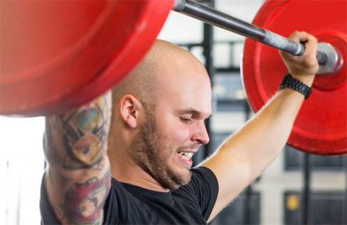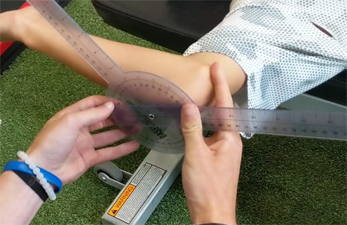Shoulder Saving Tips – Part 2, Shoulder Do’s

In the last blog, Shoulder Saving Tips – Part 1, I wrote about my shoulder don’ts, and they were the following:
1. Never go behind the head with a bar during lat pulldowns and military shoulder press
2. Avoid dips
3. Watch out for “incorrect flaring” of your elbows with bench press or push-ups
4. Stay away from “shoulder day” at the gym
5. Ditch upright rows
Today I am going to provide the second part of my “shoulder saving tips” which are my shoulder do’s.

Again this two-part series is in response to the numerous questions I get each week from patients and clients as well as from my observations in watching people in the gym.
1. Avoid what hurts
Now this statement would seem pretty logical, but I still talk to people who think under the “no pain no gain” principle and try to push through pain. The fact is pain is our body’s way of telling us something is wrong and we should listen. Our shoulders are not created equal.
Some people have different shapes to their acromion (simply, the part of the shoulder blade that forms the roof to our shoulder). These different shapes can cause narrowing of the space where our rotator cuffs travel making those shoulders with more curvature more likely to get impinged or entrapped during certain shoulder exercises. Just because your buddy or your spouse can do an exercise with their shoulders without pain does not necessarily mean that you will be able to do that same exercise comfortably. Instead of trying to push through the pain, choose something different to work that area.
2. Incorporate humeral external rotation exercises into your routine.
In order for our shoulders to work optimally, the rotator cuff needs to be balanced meaning the strength in the back part of the rotator cuff needs to be at least 2/3rds as strong as the front part of the cuff. How do we get out of balance? There are two reasons:
Reason one. Most people over-train their chests and anterior shoulders and under train the backs in the gym (see next point). This training flaw rounds the shoulders and internally rotates the arms thereby creating an over-lengthening of the back side of the rotator cuff muscles. A muscle that becomes over-lengthened loses its tensile strength and becomes weak.
Reason two. In today’s computer age, we sit longer and more frequently each day. How many people do you know sit with perfect posture? The effect of poor sitting posture, similar to number one, is that rounded shoulders will develop in time thereby causing the back side rotator cuff muscles to over lengthen and become weak. So to get the cuff back in balance we need to incorporate humeral external rotation (ER) exercises into our routine. Examples of such are sidelying dumbbell ER and cable ER with the arm subtly away from your side.
3. Balance your horizontal press work with equal amounts of horizontal pull work
Horizontal press and horizontal pull are some terms we use in our facility as we train movement patterns and not muscle groups. Since our terminology is not yet main stream, I should say balance your chest work with equal amounts of row work. In balancing, you should be doing the same quantity of exercises in a rowing motion as you do for your chest pressing motion. As well, you should do the same amounts of sets and reps for those two movement patterns in a weeks time. Creating a balance will eliminate a lot of future shoulder aches and pains.
4. Do scaption raises instead of lateral or front raises.
Front raises can have negative effects on our shoulders, especially the rotator cuff. Front raises are typically done with the arms internally rotated so the knuckles are on top of the dumbbells or barbell. This internally rotated position creates the same effect that upright rows do that I described in the last article. Scaption raises are simply raising the arms in the scapular plane with the thumbs leading the way. How do you know where your scapular plane is? Simply raise your arm up like you are asking a question for your 3rd grade teacher. That natural position is your scapular plane. You do not need to raise the weight all the way overhead. Stop at forehead height to properly perform the exercise.
5. Incorporate scapular stability exercises into your routine.
When most people think of back exercises they think rows, lat pulldowns, chin ups, reverse flies, etc. Our back muscles are made up of roughly an equal amount of power fibers and endurance fibers. The previously mentioned exercises are good for hitting the power fibers, but the endurance ones get neglected.The endurance fibers are the ones that help stabilize your shoulder blades so you can generate more power for your pressing motions. And who doesn’t want to press more! A couple of easy ones to incorporate are stability ball T’s and Y’s. The key is not to load the exercise with much external weight. I often have people start with a 2.5 lb plate. My progression is 3 sets of 8, then 10, then 12. Once you can do 3×12 with good technique then look to add weight and move back down to 3×8.
6. My last “do” for healthy shoulders is to get up out of your work chair every hour.
Prolonged sitting creates poor posture. Poor posture leads to a whole host of musculoskeletal pathologies. For the shoulder specifically, poor posture leads to rounded shoulders, a hunch back (thoracic kyphosis), and forward tipping of the shoulder blades. All three create an increased potential for rotator cuff tendinitis and eventually tearing of the cuff tendons. Solution: get up each hour and reach your arms up and stretch them up as high as you can. Then, get in a doorway and stretch the pecs out.
A colleague of mine in the strength and conditioning field talks about the “23/1 Rule” which I think is applicable for this point.
You are in the gym an hour a day (if you are lucky) using perfect technique. What are you doing the other 23 hours of the day?
This time away from the gym is where the most difference, positive or negative, takes place. Use your time wisely!
Written By: Travis Manners, PT, SCS, CSCS, President and Founder
Do you experience shoulder pain? It is time to start getting on the road of recovery! Come in for an evaluation today




